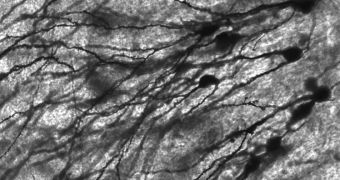Neurons accomplish the daunting task of picking up and responding to relevant electrical signals that pass through them with more finesse and efficiency than scientists previously anticipated. The work provides a fundamental new insight into how nerve cells in the brain carry out their functions.
These neurons are responsible for nearly everything that goes on in the human body, ranging from producing thoughts, ideas, and recalling memories to processing sound, light and touch and controlling the secretion of glands.
In spite of being bombarded by electrical signals from every possible direction, these cells manage to thrive, and carry out their individual tasks with great precision. This is remarkable considering that a single neuron can connect to as many as 10,000 other nerve cells.
In the new study, University of Michigan (U-M) mathematician Daniel Forger studied these cells in order to develop better ways of construction more efficient brain implants. The devices could be used to address conditions such as Parkinson's disease.
Details of the research effort and its conclusions appear in the July 7 issue of the open-access, peer-reviewed journal PLoS Computational Biology, which is edited by the Public Library of Science.
Together with coauthors David Paydarfar at the University of Massachusetts Medical School (UMMS) and John Clay at the National Institute of Neurological Disorders and Stroke (NINDS), Forger used data from mathematical models and experiments to draw conclusions on neuron functionality.
“It was found that neurons can pick out a signal from hundreds of other, similar signals,” explains Forger, who holds an appointment as an associate professor of mathematics in the UMMS College of Literature, Science and the Arts.
He is also a research assistant professor of computational medicine and bioinformatics at the School.
“We found that a neuron can prefer one signal – call it signal A – when compared with a certain group of signals, and a different signal – call it signal B – when compared with another group of signals,” the expert adds. He says that this is true even when signals A and B are of totally different types.
According to the expert, the study identifies the optimal type of signals that can be used to stimulate a specific type neuron. When applying this to medical implants, experts hope to produce devices that consume a lot less energy, by applying their stimulative impulses with more efficiency.
“Second, we found that the optimal stimulus is context-dependent, so the best signal will differ, depending on the part of the brain where the implant is placed,” Forger concludes.
The new investigation was made possible with funds provided by the US Air Force Office of Scientific Research and the US National Institutes of Health (NIH), which controls NINDS.

 14 DAY TRIAL //
14 DAY TRIAL //